Poisoning
Vultures face many threats, but one in particular is responsible for the massive declines in vulture populations throughout the globe - poison! For many decades humans have used poison to control so-called problem animals. These range from bugs and lice that damage crops to carnivores that kill livestock. The intention of the affected person is to kill the creature that is causing the damage but unfortunately poisons are not selective and it is usually the "innocent bystanders" that get killed rather than the culprit. For example, a farmer may poison the carcass of a dead sheep with the intention of killing the caracal that predated on the sheep. Vultures that come to devour the carcass ingest the poison and die instead. Recently, however, deliberate poisoning of vultures has become an issue of grave concern. The reasons behind this can be found in the illegal trade of ivory and rhino horn. An elephant that is poached for its ivory represents a huge feast for vultures and other scavengers. A kettle of vultures circling over a carcass can be used by the authorities to locate the carcass and with that comes a chance of apprehending the perpetrators. Poachers have hence resorted to lacing carcasses with poison in an attempt to stop the birds from "blowing the whistle". As a result, scores of vultures are often killed on a single carcass.
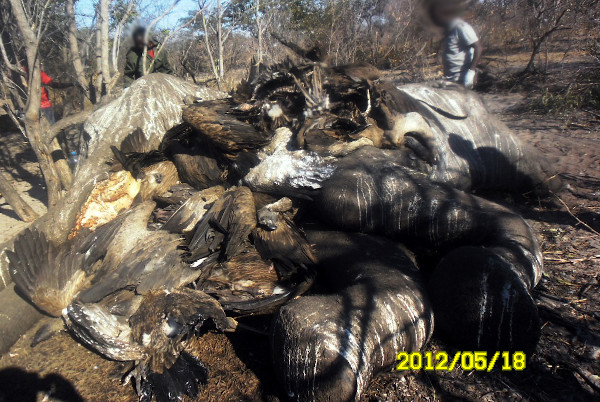
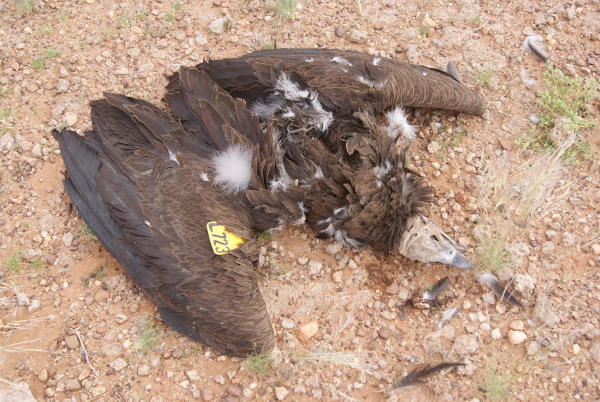 Poisoned vultures on elephant carcassPoisoned vulture
Copyright © 2012 - Monica ShikongoCopyright © 2020 - Peter Bridgeford
Poisoned vultures on elephant carcassPoisoned vulture
Copyright © 2012 - Monica ShikongoCopyright © 2020 - Peter Bridgeford
Habitat loss
Vultures are very sensitive to disturbance. Human encroachment, for various reasons, particularly on their breeding sites, can lead to abandonment of entire prime breeding areas.
Bush encroachment also plays a significant role. The vultures are unable to access carcasses as they need space to take off again. This in turn does not allow them to perform their natural clean-up function.
Power Lines
The second most important threat sprouts out of us humans' demand for power - electrical power that is! One just has to experience a short power cut to discover how dependent we have become on electricity. In order to satisfy this demand, power lines in all shapes and sizes criss-cross the country and, of course, this power infrastructure makes wonderful perches and roosts for birds. Vultures attempting to land on pylons or poles can collide with the wires and either get killed straight away or break a wing and a bird with a broken wing is doomed. Electrocution can also happen when the bird creates a short circuit between two wires during landing or take-off.
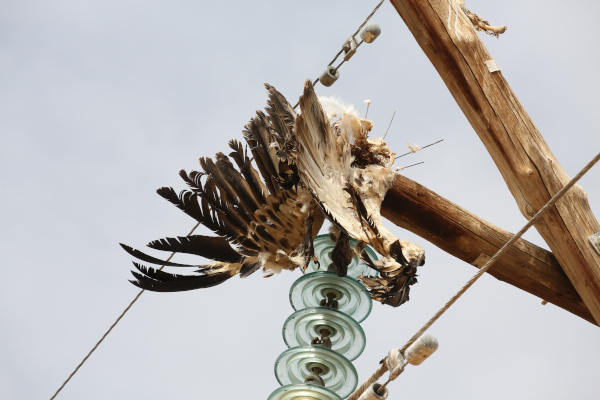 Vulture electrocuted on a power line
Copyright © 2012 - Dirk Heinrich
Vulture electrocuted on a power line
Copyright © 2012 - Dirk Heinrich
Reservoirs
Amongst the remaining threats, drowning in open reservoirs is probably the most common. In a dry country, like Namibia, water is always a precious resource and a major attraction. For a thirsty bird or mammal an open reservoir must be a huge temptation and in an attempt to drink they fall in. The vertical sides of the reservoir prevent the animal from climbing out and they eventually drown. This can be avoided by attaching a pole, branch, ladder or wooden plank to the side of the reservoir enabling the wet bird to clamber out.
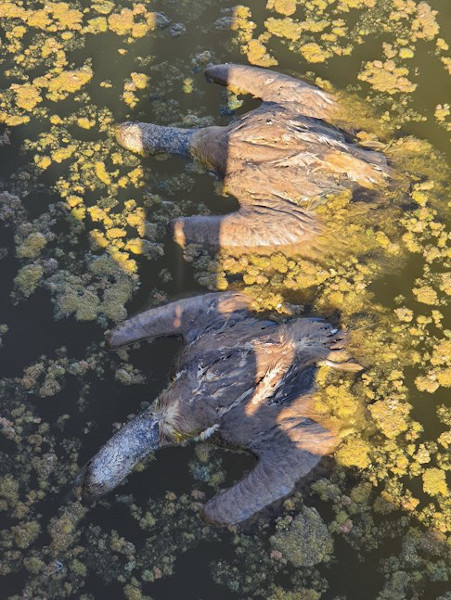
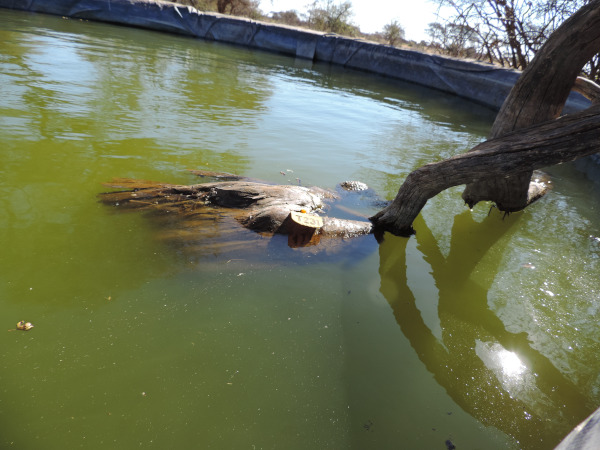 Two vultures drowned in a reservoirTagged vulture drowned in a reservoir
Copyright © 2021 - Ronelle VisagieCopyright © 2021 - Ronelle Visagie
Two vultures drowned in a reservoirTagged vulture drowned in a reservoir
Copyright © 2021 - Ronelle VisagieCopyright © 2021 - Ronelle Visagie

 Poisoned vultures on elephant carcassPoisoned vulture
Copyright © 2012 - Monica ShikongoCopyright © 2020 - Peter Bridgeford
Poisoned vultures on elephant carcassPoisoned vulture
Copyright © 2012 - Monica ShikongoCopyright © 2020 - Peter Bridgeford
 Vulture electrocuted on a power line
Copyright © 2012 - Dirk Heinrich
Vulture electrocuted on a power line
Copyright © 2012 - Dirk Heinrich

 Two vultures drowned in a reservoirTagged vulture drowned in a reservoir
Copyright © 2021 - Ronelle VisagieCopyright © 2021 - Ronelle Visagie
Two vultures drowned in a reservoirTagged vulture drowned in a reservoir
Copyright © 2021 - Ronelle VisagieCopyright © 2021 - Ronelle Visagie
